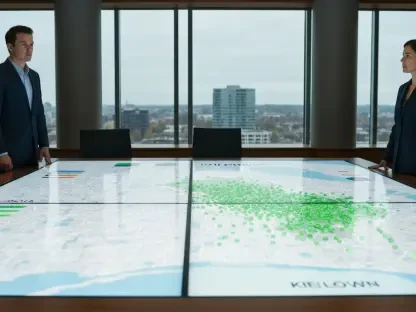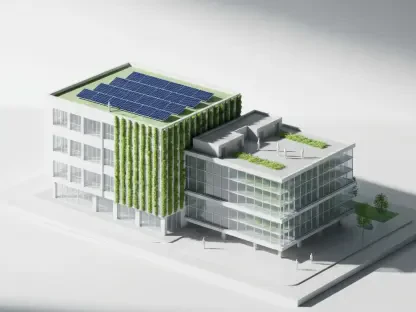Amid rising property prices and dwindling rental vacancies, Australia’s cities grapple with an ever-increasing demand for housing solutions. At the heart of this crisis is the measurable shortage of accessible, affordable residential options, impacting urban environments with both saturation and vacancy concerns. The City of Adelaide has identified the potential of adaptive reuse as a strategic response to these pressures. The ARCHI Incentives Scheme is aligning economic goals with sustainable urban development and is now in its second year. This initiative transforms commercial buildings into residential homes, breathing new life into the built environment while addressing endemic housing concerns.
ARCHI Incentives Scheme’s Transformative Vision
Repurposing Adelaide’s Urban Landscape
The ARCHI Incentives Scheme represents a paradigm shift in urban planning, encouraging creative solutions to address today’s housing demands. The strategy aims to increase the city’s residential population to 50,000 by 2036 by invigorating unused spaces. Offering grants up to $75,000, the program facilitates the conversion of dormant office spaces into comfortable living quarters. Recently expanded to embrace larger commercial structures, it recognizes over 150 buildings within Adelaide’s CBD as worthy candidates for redevelopment. This broadened scope underscores the versatility of adaptive reuse, focusing on older structures that contribute to sustainability by preserving embodied carbon and reducing reliance on new building materials.
Success Stories and Expanded Focus
A cornerstone of ARCHI’s success involves tangible transformation stories that showcase innovative approaches to housing shortages. Conversions like the transformation of a 1980s office into ‘Manhattan’-style apartments exemplify the impactful change such initiatives can foster. The scheme initially targeted shop-top buildings, and the focus has since evolved, now encompassing office-to-residential conversions that maintain both structural integrity and building heritage. Ground-floor offices have successfully been reimagined as cozy studio apartments, demonstrating the potential for revitalizing urban centers through minimal but deliberate alterations. This flexible tactic not only supports housing expansion but also energizes the cityscape with a blend of historical preservation and modern efficiency.
Adaptive Reuse: A Global Trend
Aligning with Sustainability and Efficiency
The adaptive reuse strategy embraced by Adelaide reflects broader global tendencies toward sustainable urban development, recognizing that thoughtfully repurposing existing structures can alleviate housing shortages. By retaining the essence and history of the original buildings, this method of development mitigates environmental impacts, reducing carbon emissions associated with new construction. With an intrinsic appreciation for heritage preservation, initiatives like the ARCHI scheme have sparked enthusiasm and encouraged dialogue around harnessing the oldest structures to meet contemporary demands—signifying a harmonious merger between practicality and foresight.
Environmental and Social Benefits
Adaptive reuse’s functional benefits are matched by equally compelling environmental and social advantages, fostering a comprehensive understanding of effective urban planning. Through the strategic conversion of commercial spaces into residential homes, ARCHI brings new opportunities to communities in Adelaide while simultaneously embracing a global model for reducing waste and lowering carbon footprints. The preservation of embodied carbon within existing structures not only fulfills sustainability mandates but enriches the urban fabric, reinforcing identification with local heritage and cultural landmarks. This balanced approach provides a solution to housing shortages that is both environmentally mindful and socially inclusive, paving a way for continued urban revitalization.
Redefining Urban Spaces for Future Growth
Collaborative Efforts and Innovative Solutions
At the heart of ARCHI’s initiative is the collaboration with building owners and project teams who reimagine underused spaces. By streamlining the conversion process, cities like Adelaide are enabling more homes to emerge in central locations, contributing to vibrant urban environments. Encouraging the transformation from underutilized offices to residences represents an innovative leap forward in urban planning. Though this initiative requires a concerted effort from various stakeholders, it opens doors for inventive housing solutions, mitigating crisis while promising a rejuvenated city center that accommodates flourishing communities and functional living spaces.
Long-term Implications and Conclusions
As property prices soar and rental vacancies decrease, Australian cities face an escalating demand for adequate housing solutions. Central to this challenge is the evident lack of accessible and affordable residential choices, which significantly affects urban areas, leading to issues like saturation and scarcity. In response, the City of Adelaide has pinpointed adaptive reuse as a strategic solution to these housing pressures. The ARCHI Incentives Scheme reflects this initiative by aligning economic objectives with sustainable urban development and is now in its second year. This innovative program focuses on converting commercial structures into residential spaces, breathing new life into existing buildings while simultaneously tackling the persistent housing problem. As this scheme gains traction, it exemplifies a forward-thinking approach to urban planning, offering a dual benefit of revitalizing the architectural landscape and contributing to relieving the housing crisis that cities face today.









